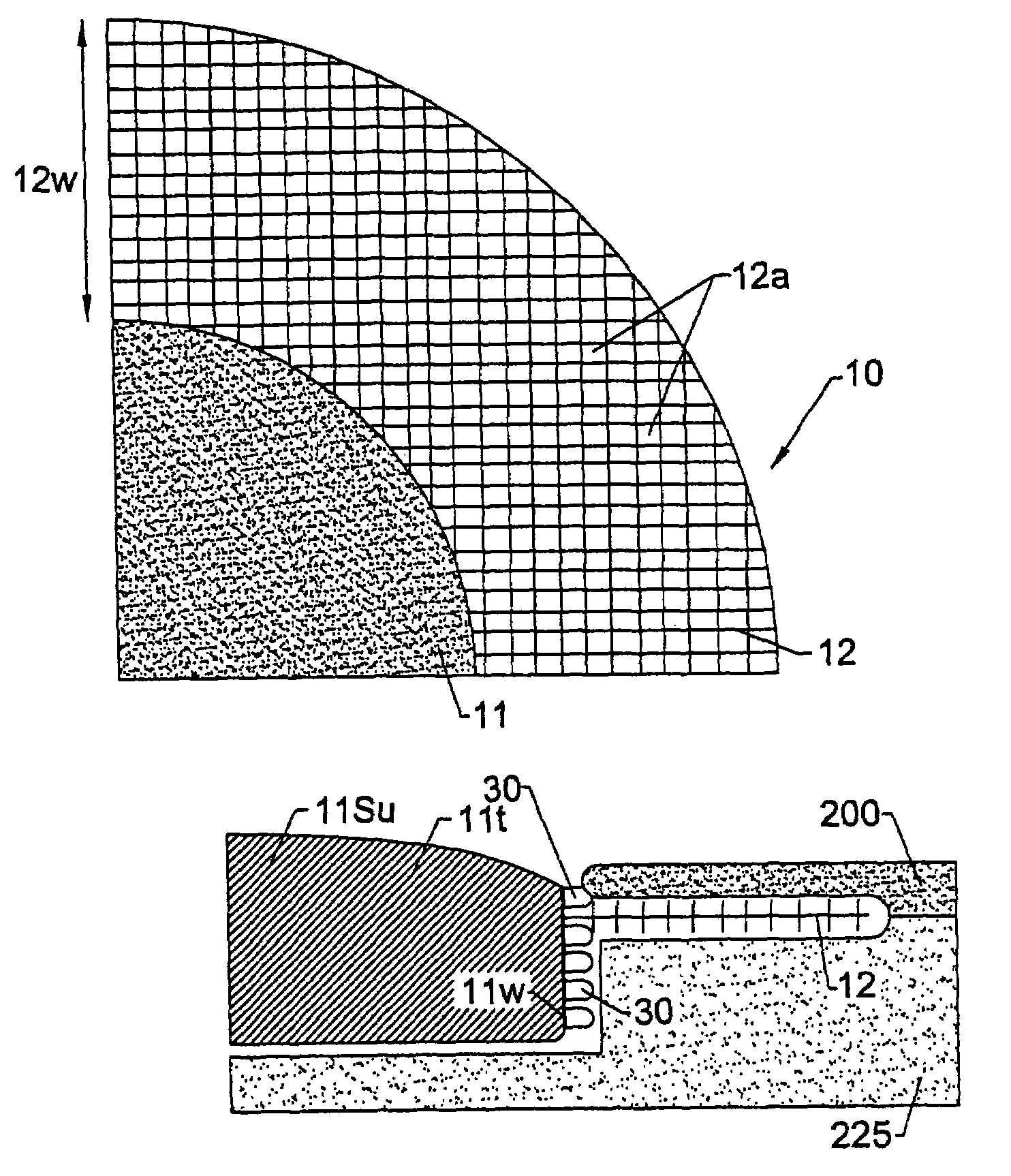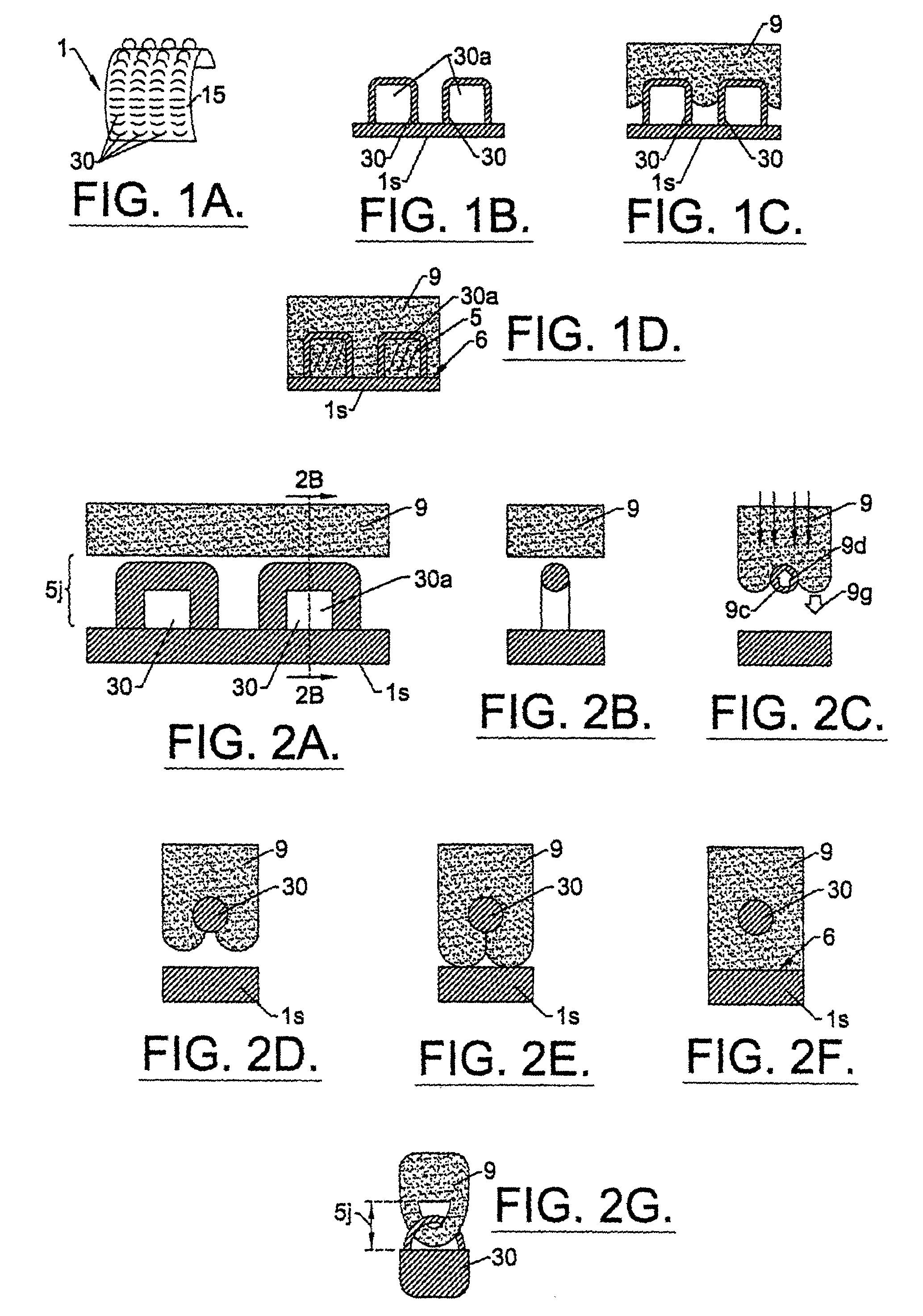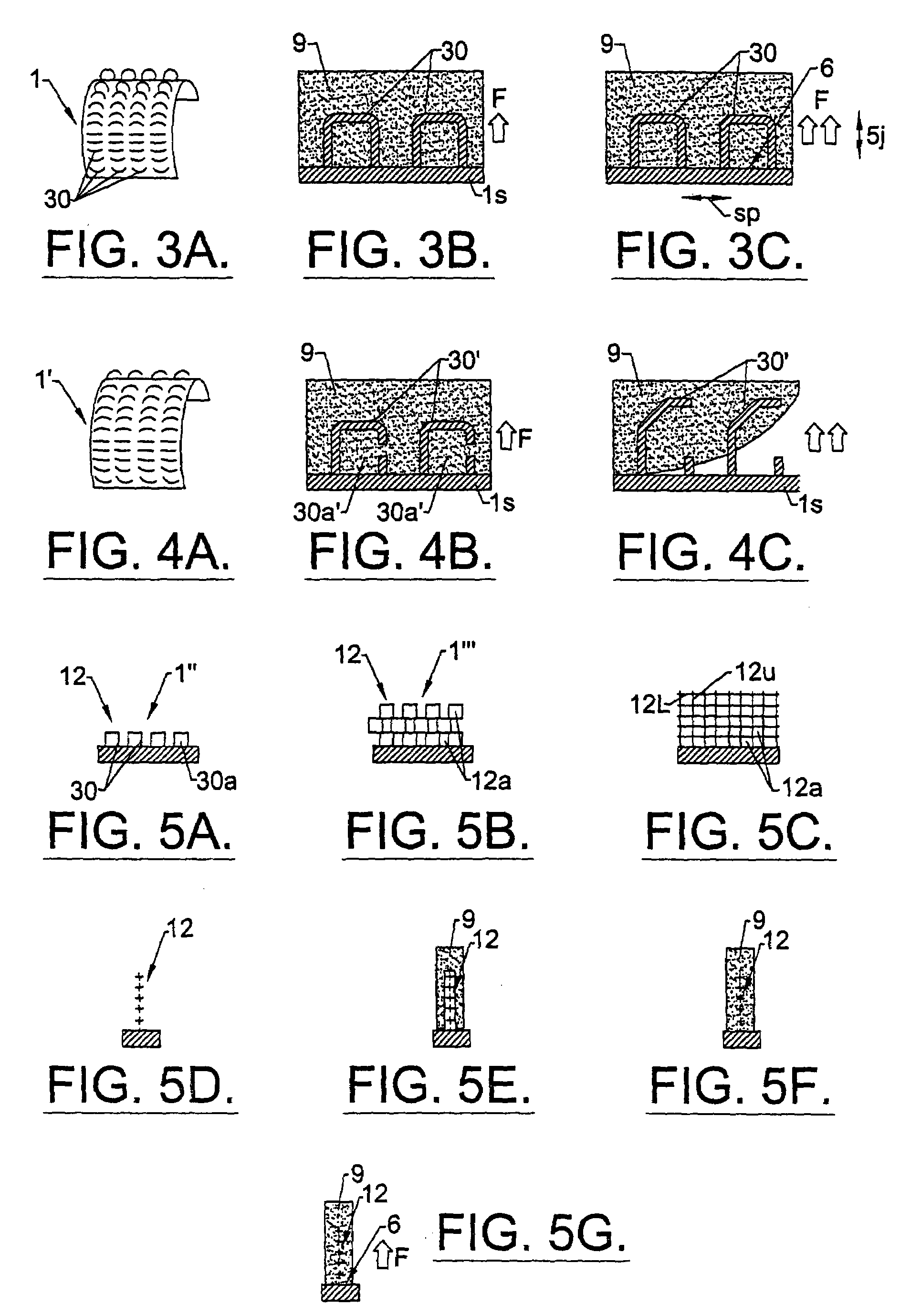Tissue lockable connecting structures
a technology of tissue locking and connecting structures, which is applied in the direction of prosthesis, dental surgery, catheters, etc., can solve the problems of soft tissue infection and other complications, weak and insufficient bio-sealing connection between the skin and the device, and disrupt the protective barrier, etc., to achieve strong bio-connection, inhibit tissue and skin infection, and improve mechanical connections
- Summary
- Abstract
- Description
- Claims
- Application Information
AI Technical Summary
Benefits of technology
Problems solved by technology
Method used
Image
Examples
example 1
Structure, Material, and Method
[0143]This study was approved by the Animal Care and Use Committee (East Carolina University School of Medicine), and the care and handling of animals were in accord with national Institutes of Health guidelines.
[0144]The LPD-I device tested (“locking percutaneous device”) had two portions. The solid clear plexiglass dome was a prototype simulating any medically necessary device. The dome diameter studied ranged from 2.3–2.7 cm, the thickness at the edge was approximately 0.7 cm, and at its center 1.1 cm. The second portion of the LPD-I was the connecting structure that included two parts: the skin connector and the subcutaneous connector. FIGS. 11A and 11B are digital images of the studied device.
[0145]The skin connector was a mesh collar made from polyester net with 72 eyes / cm2. The diameter of the warp and weft was approximately 0.2 mm. The mesh was structured so that the warp and the weft did not slide over each other, thereby fixing the pore size ...
example 2
Structure, Material, and Method
[0157]Two types of LPD-II devices were tested. Type 1 had two components, a dome and a skin connector (but without the underlying skin stop collar). The Type 2 device had an extra structure, the SSC (see FIG. 10). The dome was constructed from solid clear plexiglass with a thickness of 0.4 cm and a diameter of 2.3–3.5 cm. The skin connector or mesh collar surrounded the dome. It was made from polyester net with 72 eyes / cm2 and about 0.2 mm diameter of the warp and weft. Its width was approximately 1.3 cm. The SSC was positioned just beneath the mesh collar and was made from stainless steel mesh with 64 eyes / cm2. The wire had a diameter of 0.5 mm and width of approximately 0.4 cm.
[0158]The mesh collar of the LPD-II without the SSC (type 1) was attached to the bottom edge of the dome by heating. The mesh collar and SSC (LPD-II type 2) were fixed to the lower edge of the dome simultaneously first by heating and then by application of a layer of thick plex...
PUM
 Login to View More
Login to View More Abstract
Description
Claims
Application Information
 Login to View More
Login to View More - R&D
- Intellectual Property
- Life Sciences
- Materials
- Tech Scout
- Unparalleled Data Quality
- Higher Quality Content
- 60% Fewer Hallucinations
Browse by: Latest US Patents, China's latest patents, Technical Efficacy Thesaurus, Application Domain, Technology Topic, Popular Technical Reports.
© 2025 PatSnap. All rights reserved.Legal|Privacy policy|Modern Slavery Act Transparency Statement|Sitemap|About US| Contact US: help@patsnap.com



